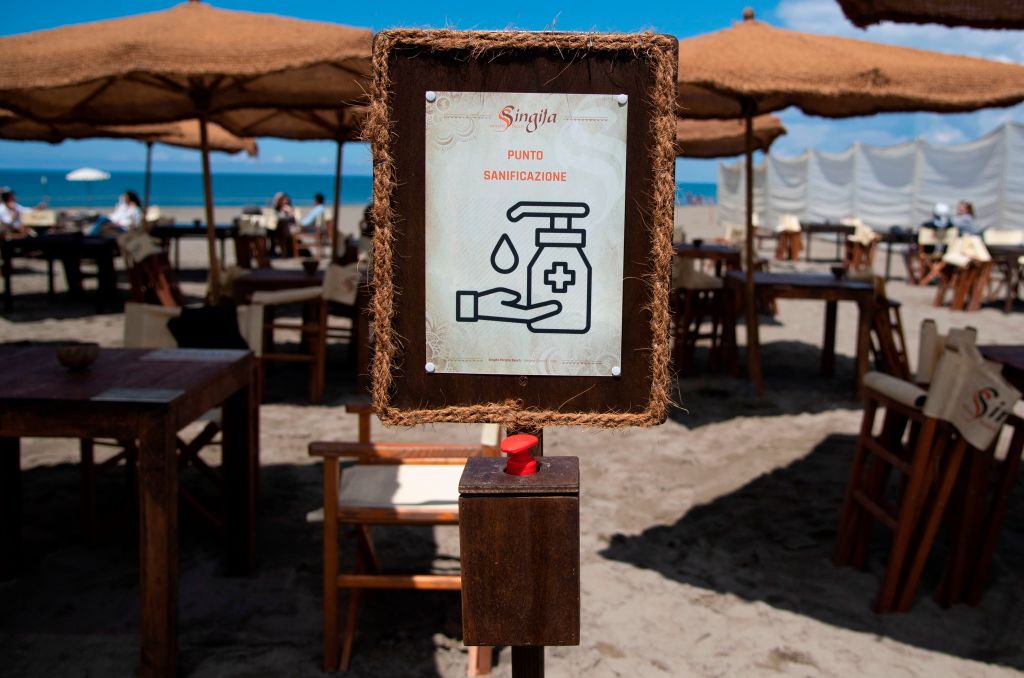As coronavirus infections flare up across the world, from  https://abs.twimg.com/emoji/v2/... draggable="false" alt="🇪🇸" title="Flagge von Spanien" aria-label="Emoji: Flagge von Spanien">Spain to
https://abs.twimg.com/emoji/v2/... draggable="false" alt="🇪🇸" title="Flagge von Spanien" aria-label="Emoji: Flagge von Spanien">Spain to  https://abs.twimg.com/emoji/v2/... draggable="false" alt="🇦🇺" title="Flagge von Australien" aria-label="Emoji: Flagge von Australien">Australia, there are two countries worth paying attention to:
https://abs.twimg.com/emoji/v2/... draggable="false" alt="🇦🇺" title="Flagge von Australien" aria-label="Emoji: Flagge von Australien">Australia, there are two countries worth paying attention to:  https://abs.twimg.com/emoji/v2/... draggable="false" alt="🇮🇹" title="Flagge von Italien" aria-label="Emoji: Flagge von Italien">Italy and
https://abs.twimg.com/emoji/v2/... draggable="false" alt="🇮🇹" title="Flagge von Italien" aria-label="Emoji: Flagge von Italien">Italy and  https://abs.twimg.com/emoji/v2/... draggable="false" alt="🇸🇪" title="Flagge von Schweden" aria-label="Emoji: Flagge von Schweden">Sweden https://trib.al/5co5dSU ">https://trib.al/5co5dSU&q...
https://abs.twimg.com/emoji/v2/... draggable="false" alt="🇸🇪" title="Flagge von Schweden" aria-label="Emoji: Flagge von Schweden">Sweden https://trib.al/5co5dSU ">https://trib.al/5co5dSU&q...
While the daily case count in Spain rose past 2,000 last week and France’s surpassed 1,000, @LionelRALaurent points out that Italy and Sweden’s daily cases are averaging around 200 each, with no rebound in sight.
What are they doing differently? http://trib.al/5co5dSU ">https://trib.al/5co5dSU&q...
What are they doing differently? http://trib.al/5co5dSU ">https://trib.al/5co5dSU&q...
These countries once stood out for the wrong reasons:
 https://abs.twimg.com/emoji/v2/... draggable="false" alt="🇮🇹" title="Flagge von Italien" aria-label="Emoji: Flagge von Italien">Italy’s draconian lockdown saved lives, but it came late
https://abs.twimg.com/emoji/v2/... draggable="false" alt="🇮🇹" title="Flagge von Italien" aria-label="Emoji: Flagge von Italien">Italy’s draconian lockdown saved lives, but it came late
 https://abs.twimg.com/emoji/v2/... draggable="false" alt="🇸🇪" title="Flagge von Schweden" aria-label="Emoji: Flagge von Schweden">Sweden’s lockdown controversially never came at all
https://abs.twimg.com/emoji/v2/... draggable="false" alt="🇸🇪" title="Flagge von Schweden" aria-label="Emoji: Flagge von Schweden">Sweden’s lockdown controversially never came at all
Both have death tolls of almost 600 per one million people http://trib.al/5co5dSU ">https://trib.al/5co5dSU&q...
Both have death tolls of almost 600 per one million people http://trib.al/5co5dSU ">https://trib.al/5co5dSU&q...
Still, with Italy gradually reopening its economy and Sweden maintaining its policy, both nations have found their stride in living with the virus http://trib.al/5co5dSU ">https://trib.al/5co5dSU&q...
Italy’s top-down, public-health management of life after lockdown is working.
As in other nations, social-distancing rules require people to keep one meter apart and wear face masks in public spaces, but Italy has a particularly high level of enforcement http://trib.al/5co5dSU ">https://trib.al/5co5dSU&q...
As in other nations, social-distancing rules require people to keep one meter apart and wear face masks in public spaces, but Italy has a particularly high level of enforcement http://trib.al/5co5dSU ">https://trib.al/5co5dSU&q...
Italians have to:
 https://abs.twimg.com/emoji/v2/... draggable="false" alt="🌡" title="Thermometer" aria-label="Emoji: Thermometer">Have their temperature checked before taking a train
https://abs.twimg.com/emoji/v2/... draggable="false" alt="🌡" title="Thermometer" aria-label="Emoji: Thermometer">Have their temperature checked before taking a train
 https://abs.twimg.com/emoji/v2/... draggable="false" alt="🍽" title="Gabel und Messer mit Teller" aria-label="Emoji: Gabel und Messer mit Teller">Give restaurants full contact details for infection tracing
https://abs.twimg.com/emoji/v2/... draggable="false" alt="🍽" title="Gabel und Messer mit Teller" aria-label="Emoji: Gabel und Messer mit Teller">Give restaurants full contact details for infection tracing
 https://abs.twimg.com/emoji/v2/... draggable="false" alt="📸" title="Kamera mit Blitz" aria-label="Emoji: Kamera mit Blitz">Fill out special forms for access to tourist hotspots
https://abs.twimg.com/emoji/v2/... draggable="false" alt="📸" title="Kamera mit Blitz" aria-label="Emoji: Kamera mit Blitz">Fill out special forms for access to tourist hotspots
Those who break quarantine face fines or jail time http://trib.al/5co5dSU ">https://trib.al/5co5dSU&q...
Those who break quarantine face fines or jail time http://trib.al/5co5dSU ">https://trib.al/5co5dSU&q...
Regulations extend to how Italians dance in a nightclub or sunbathe on the beach.
Memories of harrowing scenes in overloaded hospitals are a motivator, fostering a feeling of collective responsibility and fear http://trib.al/5co5dSU ">https://trib.al/5co5dSU&q...
Memories of harrowing scenes in overloaded hospitals are a motivator, fostering a feeling of collective responsibility and fear http://trib.al/5co5dSU ">https://trib.al/5co5dSU&q...
So if the lesson from Italy is that bureaucracy, enforcement and obedience are key to controlling the virus, what’s with Sweden?
Despite the controversy, grim death toll and continued rise in infections, the country has stuck to its approach http://trib.al/5co5dSU ">https://trib.al/5co5dSU&q...
Despite the controversy, grim death toll and continued rise in infections, the country has stuck to its approach http://trib.al/5co5dSU ">https://trib.al/5co5dSU&q...
In contrast to Italy, Sweden has:
 https://abs.twimg.com/emoji/v2/... draggable="false" alt="🙂" title="Leicht lächelndes Gesicht" aria-label="Emoji: Leicht lächelndes Gesicht">No mandatory mask-wearing
https://abs.twimg.com/emoji/v2/... draggable="false" alt="🙂" title="Leicht lächelndes Gesicht" aria-label="Emoji: Leicht lächelndes Gesicht">No mandatory mask-wearing
 https://abs.twimg.com/emoji/v2/... draggable="false" alt="↔️" title="Links-rechts-Pfeil" aria-label="Emoji: Links-rechts-Pfeil">Social distancing is recommended rather than enforced
https://abs.twimg.com/emoji/v2/... draggable="false" alt="↔️" title="Links-rechts-Pfeil" aria-label="Emoji: Links-rechts-Pfeil">Social distancing is recommended rather than enforced
 https://abs.twimg.com/emoji/v2/... draggable="false" alt="🤒" title="Gesicht mit Thermometer" aria-label="Emoji: Gesicht mit Thermometer">People are advised to stay home if they’re feeling unwell
https://abs.twimg.com/emoji/v2/... draggable="false" alt="🤒" title="Gesicht mit Thermometer" aria-label="Emoji: Gesicht mit Thermometer">People are advised to stay home if they’re feeling unwell
But Swedes haven’t benefited from simply “letting the virus rip” http://trib.al/5co5dSU ">https://trib.al/5co5dSU&q...
But Swedes haven’t benefited from simply “letting the virus rip” http://trib.al/5co5dSU ">https://trib.al/5co5dSU&q...
Behavioral changes have taken place. The flow of human traffic is still not back to normal in many areas, and some rules have been tightened:
 https://abs.twimg.com/emoji/v2/... draggable="false" alt="🚫" title=""Betreten verboten!"-Zeichen" aria-label="Emoji: "Betreten verboten!"-Zeichen">Ban on visits to elderly care homes
https://abs.twimg.com/emoji/v2/... draggable="false" alt="🚫" title=""Betreten verboten!"-Zeichen" aria-label="Emoji: "Betreten verboten!"-Zeichen">Ban on visits to elderly care homes
 https://abs.twimg.com/emoji/v2/... draggable="false" alt="🍽" title="Gabel und Messer mit Teller" aria-label="Emoji: Gabel und Messer mit Teller">Shutdown of restaurants in Stockholm that weren’t following guidelines http://trib.al/5co5dSU ">https://trib.al/5co5dSU&q...
https://abs.twimg.com/emoji/v2/... draggable="false" alt="🍽" title="Gabel und Messer mit Teller" aria-label="Emoji: Gabel und Messer mit Teller">Shutdown of restaurants in Stockholm that weren’t following guidelines http://trib.al/5co5dSU ">https://trib.al/5co5dSU&q...
It’s not a model that can be easily reproduced elsewhere, but the real secret might be consistency.
If the aim is to live with the virus until a vaccine is found, a stop-and-go approach to rules (see: flip-flops on face masks) might be counterproductive http://trib.al/5co5dSU ">https://trib.al/5co5dSU&q...
If the aim is to live with the virus until a vaccine is found, a stop-and-go approach to rules (see: flip-flops on face masks) might be counterproductive http://trib.al/5co5dSU ">https://trib.al/5co5dSU&q...

 Read on Twitter
Read on Twitter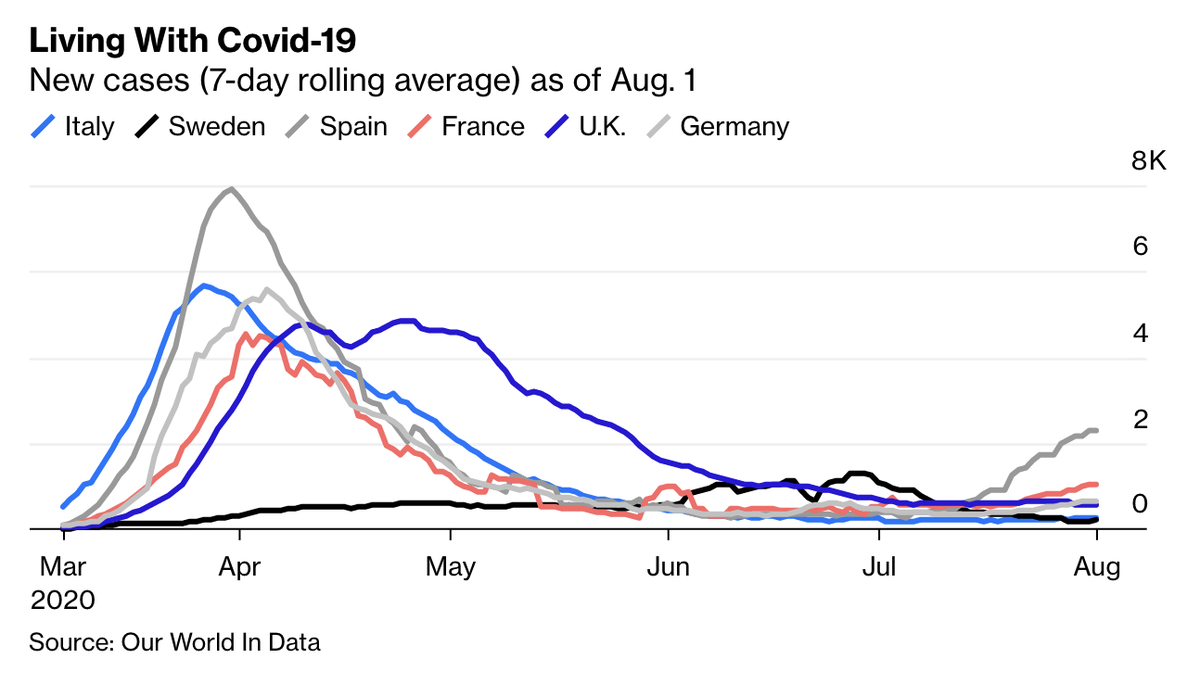
 Italy’s draconian lockdown saved lives, but it came latehttps://abs.twimg.com/emoji/v2/... draggable="false" alt="🇸🇪" title="Flagge von Schweden" aria-label="Emoji: Flagge von Schweden">Sweden’s lockdown controversially never came at allBoth have death tolls of almost 600 per one million people https://trib.al/5co5dSU&q..." title="These countries once stood out for the wrong reasons:https://abs.twimg.com/emoji/v2/... draggable="false" alt="🇮🇹" title="Flagge von Italien" aria-label="Emoji: Flagge von Italien">Italy’s draconian lockdown saved lives, but it came latehttps://abs.twimg.com/emoji/v2/... draggable="false" alt="🇸🇪" title="Flagge von Schweden" aria-label="Emoji: Flagge von Schweden">Sweden’s lockdown controversially never came at allBoth have death tolls of almost 600 per one million people https://trib.al/5co5dSU&q..." class="img-responsive" style="max-width:100%;"/>
Italy’s draconian lockdown saved lives, but it came latehttps://abs.twimg.com/emoji/v2/... draggable="false" alt="🇸🇪" title="Flagge von Schweden" aria-label="Emoji: Flagge von Schweden">Sweden’s lockdown controversially never came at allBoth have death tolls of almost 600 per one million people https://trib.al/5co5dSU&q..." title="These countries once stood out for the wrong reasons:https://abs.twimg.com/emoji/v2/... draggable="false" alt="🇮🇹" title="Flagge von Italien" aria-label="Emoji: Flagge von Italien">Italy’s draconian lockdown saved lives, but it came latehttps://abs.twimg.com/emoji/v2/... draggable="false" alt="🇸🇪" title="Flagge von Schweden" aria-label="Emoji: Flagge von Schweden">Sweden’s lockdown controversially never came at allBoth have death tolls of almost 600 per one million people https://trib.al/5co5dSU&q..." class="img-responsive" style="max-width:100%;"/>


 Have their temperature checked before taking a trainhttps://abs.twimg.com/emoji/v2/... draggable="false" alt="🍽" title="Gabel und Messer mit Teller" aria-label="Emoji: Gabel und Messer mit Teller">Give restaurants full contact details for infection tracinghttps://abs.twimg.com/emoji/v2/... draggable="false" alt="📸" title="Kamera mit Blitz" aria-label="Emoji: Kamera mit Blitz">Fill out special forms for access to tourist hotspotsThose who break quarantine face fines or jail time https://trib.al/5co5dSU&q..." title="Italians have to:https://abs.twimg.com/emoji/v2/... draggable="false" alt="🌡" title="Thermometer" aria-label="Emoji: Thermometer">Have their temperature checked before taking a trainhttps://abs.twimg.com/emoji/v2/... draggable="false" alt="🍽" title="Gabel und Messer mit Teller" aria-label="Emoji: Gabel und Messer mit Teller">Give restaurants full contact details for infection tracinghttps://abs.twimg.com/emoji/v2/... draggable="false" alt="📸" title="Kamera mit Blitz" aria-label="Emoji: Kamera mit Blitz">Fill out special forms for access to tourist hotspotsThose who break quarantine face fines or jail time https://trib.al/5co5dSU&q..." class="img-responsive" style="max-width:100%;"/>
Have their temperature checked before taking a trainhttps://abs.twimg.com/emoji/v2/... draggable="false" alt="🍽" title="Gabel und Messer mit Teller" aria-label="Emoji: Gabel und Messer mit Teller">Give restaurants full contact details for infection tracinghttps://abs.twimg.com/emoji/v2/... draggable="false" alt="📸" title="Kamera mit Blitz" aria-label="Emoji: Kamera mit Blitz">Fill out special forms for access to tourist hotspotsThose who break quarantine face fines or jail time https://trib.al/5co5dSU&q..." title="Italians have to:https://abs.twimg.com/emoji/v2/... draggable="false" alt="🌡" title="Thermometer" aria-label="Emoji: Thermometer">Have their temperature checked before taking a trainhttps://abs.twimg.com/emoji/v2/... draggable="false" alt="🍽" title="Gabel und Messer mit Teller" aria-label="Emoji: Gabel und Messer mit Teller">Give restaurants full contact details for infection tracinghttps://abs.twimg.com/emoji/v2/... draggable="false" alt="📸" title="Kamera mit Blitz" aria-label="Emoji: Kamera mit Blitz">Fill out special forms for access to tourist hotspotsThose who break quarantine face fines or jail time https://trib.al/5co5dSU&q..." class="img-responsive" style="max-width:100%;"/>

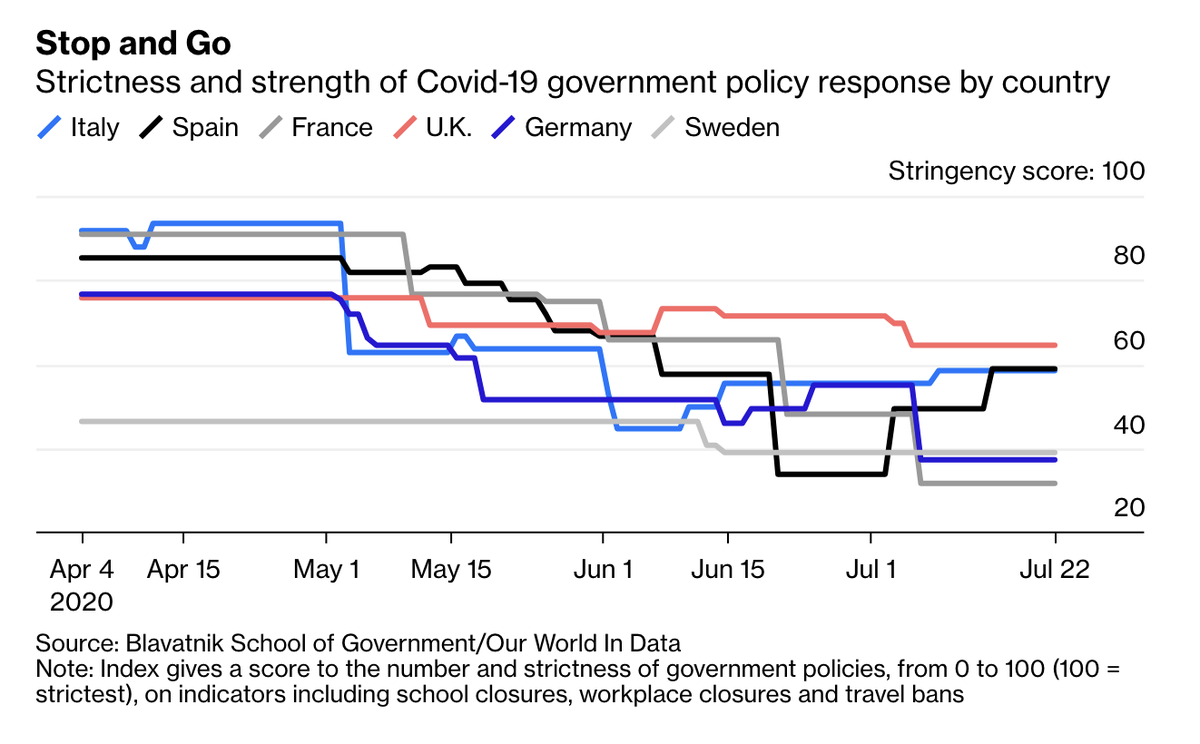
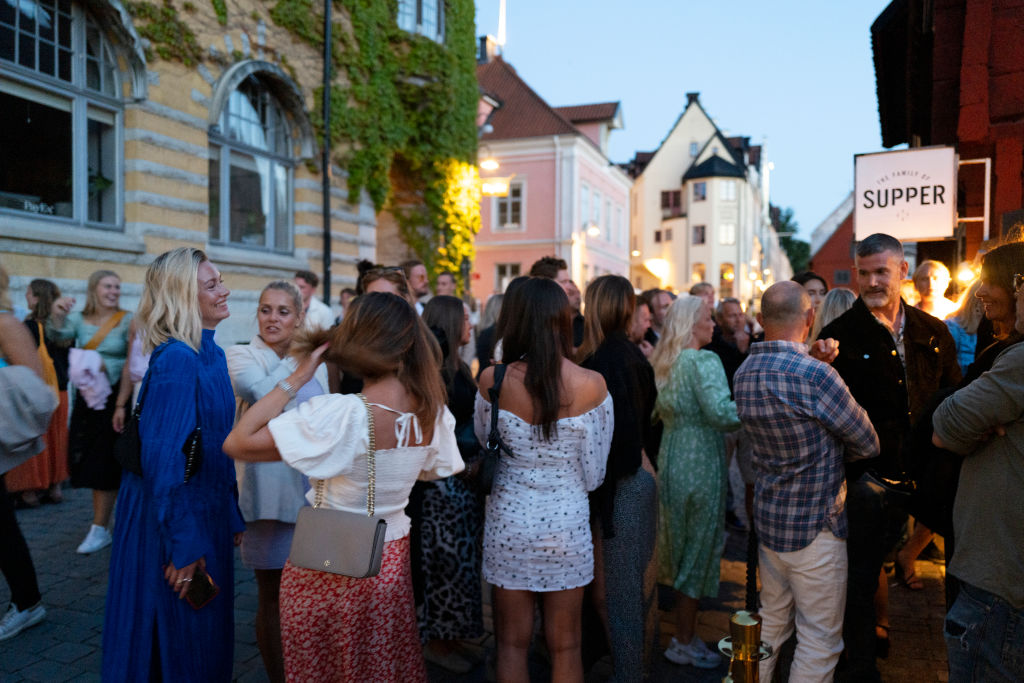 No mandatory mask-wearinghttps://abs.twimg.com/emoji/v2/... draggable="false" alt="↔️" title="Links-rechts-Pfeil" aria-label="Emoji: Links-rechts-Pfeil">Social distancing is recommended rather than enforcedhttps://abs.twimg.com/emoji/v2/... draggable="false" alt="🤒" title="Gesicht mit Thermometer" aria-label="Emoji: Gesicht mit Thermometer">People are advised to stay home if they’re feeling unwellBut Swedes haven’t benefited from simply “letting the virus rip” https://trib.al/5co5dSU&q..." title="In contrast to Italy, Sweden has:https://abs.twimg.com/emoji/v2/... draggable="false" alt="🙂" title="Leicht lächelndes Gesicht" aria-label="Emoji: Leicht lächelndes Gesicht">No mandatory mask-wearinghttps://abs.twimg.com/emoji/v2/... draggable="false" alt="↔️" title="Links-rechts-Pfeil" aria-label="Emoji: Links-rechts-Pfeil">Social distancing is recommended rather than enforcedhttps://abs.twimg.com/emoji/v2/... draggable="false" alt="🤒" title="Gesicht mit Thermometer" aria-label="Emoji: Gesicht mit Thermometer">People are advised to stay home if they’re feeling unwellBut Swedes haven’t benefited from simply “letting the virus rip” https://trib.al/5co5dSU&q..." class="img-responsive" style="max-width:100%;"/>
No mandatory mask-wearinghttps://abs.twimg.com/emoji/v2/... draggable="false" alt="↔️" title="Links-rechts-Pfeil" aria-label="Emoji: Links-rechts-Pfeil">Social distancing is recommended rather than enforcedhttps://abs.twimg.com/emoji/v2/... draggable="false" alt="🤒" title="Gesicht mit Thermometer" aria-label="Emoji: Gesicht mit Thermometer">People are advised to stay home if they’re feeling unwellBut Swedes haven’t benefited from simply “letting the virus rip” https://trib.al/5co5dSU&q..." title="In contrast to Italy, Sweden has:https://abs.twimg.com/emoji/v2/... draggable="false" alt="🙂" title="Leicht lächelndes Gesicht" aria-label="Emoji: Leicht lächelndes Gesicht">No mandatory mask-wearinghttps://abs.twimg.com/emoji/v2/... draggable="false" alt="↔️" title="Links-rechts-Pfeil" aria-label="Emoji: Links-rechts-Pfeil">Social distancing is recommended rather than enforcedhttps://abs.twimg.com/emoji/v2/... draggable="false" alt="🤒" title="Gesicht mit Thermometer" aria-label="Emoji: Gesicht mit Thermometer">People are advised to stay home if they’re feeling unwellBut Swedes haven’t benefited from simply “letting the virus rip” https://trib.al/5co5dSU&q..." class="img-responsive" style="max-width:100%;"/>
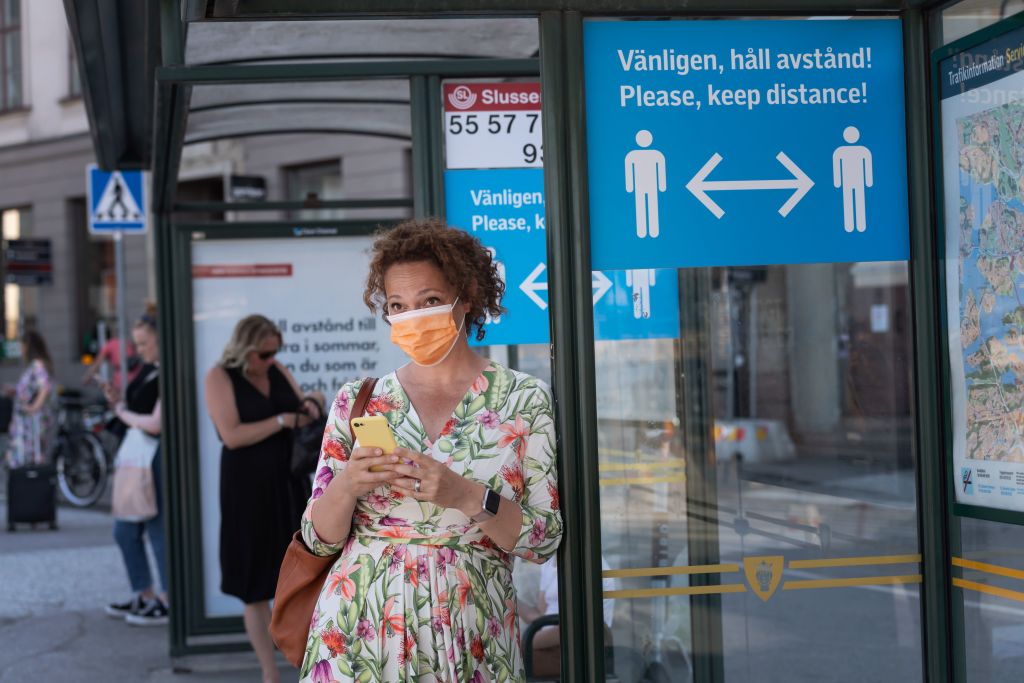 Ban on visits to elderly care homeshttps://abs.twimg.com/emoji/v2/... draggable="false" alt="🍽" title="Gabel und Messer mit Teller" aria-label="Emoji: Gabel und Messer mit Teller">Shutdown of restaurants in Stockholm that weren’t following guidelines https://trib.al/5co5dSU&q..." title="Behavioral changes have taken place. The flow of human traffic is still not back to normal in many areas, and some rules have been tightened:https://abs.twimg.com/emoji/v2/... draggable="false" alt="🚫" title=""Betreten verboten!"-Zeichen" aria-label="Emoji: "Betreten verboten!"-Zeichen">Ban on visits to elderly care homeshttps://abs.twimg.com/emoji/v2/... draggable="false" alt="🍽" title="Gabel und Messer mit Teller" aria-label="Emoji: Gabel und Messer mit Teller">Shutdown of restaurants in Stockholm that weren’t following guidelines https://trib.al/5co5dSU&q..." class="img-responsive" style="max-width:100%;"/>
Ban on visits to elderly care homeshttps://abs.twimg.com/emoji/v2/... draggable="false" alt="🍽" title="Gabel und Messer mit Teller" aria-label="Emoji: Gabel und Messer mit Teller">Shutdown of restaurants in Stockholm that weren’t following guidelines https://trib.al/5co5dSU&q..." title="Behavioral changes have taken place. The flow of human traffic is still not back to normal in many areas, and some rules have been tightened:https://abs.twimg.com/emoji/v2/... draggable="false" alt="🚫" title=""Betreten verboten!"-Zeichen" aria-label="Emoji: "Betreten verboten!"-Zeichen">Ban on visits to elderly care homeshttps://abs.twimg.com/emoji/v2/... draggable="false" alt="🍽" title="Gabel und Messer mit Teller" aria-label="Emoji: Gabel und Messer mit Teller">Shutdown of restaurants in Stockholm that weren’t following guidelines https://trib.al/5co5dSU&q..." class="img-responsive" style="max-width:100%;"/>
